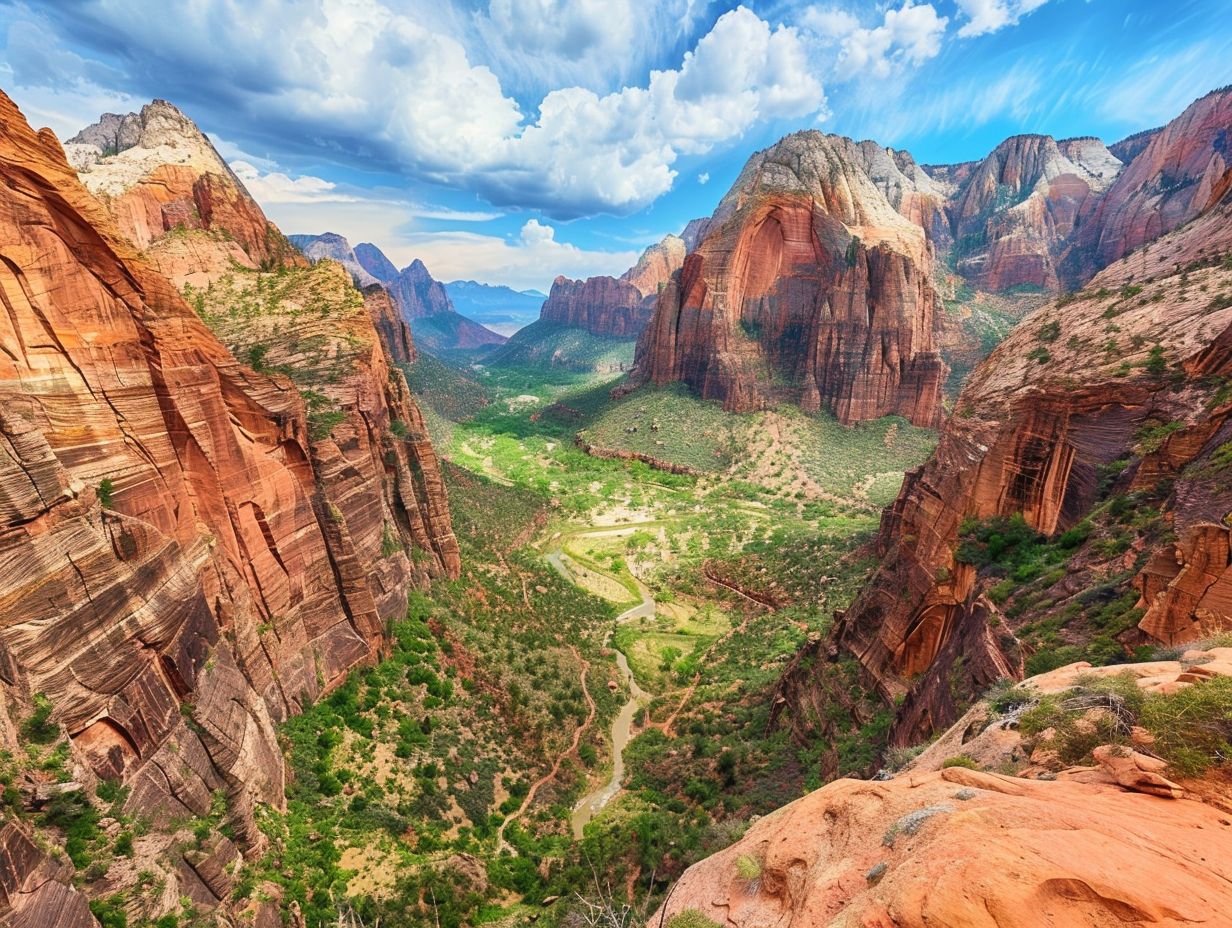Zion National Park, located in southwestern Utah, is a breathtaking natural wonder that covers a total area of 229 square miles (146,592 acres). This vast and diverse landscape is divided into four distinct life zones, each offering its own unique ecosystem and array of plant and animal life.
Zion National Park’s Diverse Ecosystems
-
Desert Zone: The desert zone of Zion National Park is home to a variety of desert-adapted plants, such as prickly pears, cholla, and yucca, which thrive in the arid climate.
-
Riparian Zone: The park’s riparian zone, centered around the Virgin River and its tributaries, supports a lush and vibrant ecosystem with hanging gardens, brilliantly-colored Zion shooting-stars, scarlet monkeyflowers, and Western and golden columbines.
-
Woodland Zone: The woodland zone of Zion National Park is characterized by a diverse array of trees, including pinyon pine, juniper, and ponderosa pine, which provide habitat for a variety of wildlife species.
-
Coniferous Forest Zone: The park’s highest elevations are dominated by a coniferous forest zone, where towering pines, firs, and spruces create a serene and majestic landscape.
Zion National Park’s Diverse Wildlife

Zion National Park is home to a rich and diverse array of wildlife, including:
- 289 species of birds
- 75 mammal species (including 19 species of bat)
- 32 reptile species
These animals thrive in the park’s varied habitats, from the desert floor to the high-altitude coniferous forests.
Zion National Park’s Unique Geology
The geology of Zion National Park is truly remarkable, with a history that spans approximately 250 million years. The park’s landscape is characterized by high plateaus, a maze of narrow, deep, sandstone canyons, and the Virgin River and its tributaries. These features were formed over time by a variety of geological processes, including periods when the area was covered by a shallow sea, huge, sluggish rivers, and a vast desert.
One of the park’s most iconic features is the Navajo Sandstone, which forms the park’s famous sculpted and colorful 2,000-foot cliffs. The park’s highest point is Horse Ranch Mountain at 8,726 feet, while the lowest point is Coal Pits Wash at 3,666 feet.
Zion Canyon: The Heart of Zion National Park
Zion Canyon, a prominent feature of the park, is 15 miles long and up to 2,640 feet deep. The canyon walls are reddish and tan-colored Navajo Sandstone, carved by the North Fork of the Virgin River over millions of years.
Visiting Zion National Park
Zion National Park is located in the Mountain Time Zone and is open year-round. The entrance fee is $35 per private vehicle per week. In 2021, the park attracted 5,039,835 visitors, making it a popular destination for outdoor enthusiasts and nature lovers alike.
Conclusion
Zion National Park is a truly remarkable and diverse natural wonder, covering an area of 229 square miles (146,592 acres) and offering a wealth of geological, ecological, and recreational opportunities. Whether you’re drawn to the park’s towering cliffs, lush riparian zones, or abundant wildlife, there is something for everyone to discover and explore in this stunning corner of Utah.

